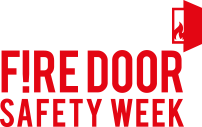 In the shadow of the Grenfell Tower devastation, Fire Door Safety Week (25th September – 1st October 2017) campaigners are renewing their call for a publicly available national register of Responsible Persons for fire safety in rented accommodation.
In the shadow of the Grenfell Tower devastation, Fire Door Safety Week (25th September – 1st October 2017) campaigners are renewing their call for a publicly available national register of Responsible Persons for fire safety in rented accommodation.
The register would require the name of the individual who has legal responsibility for fire safety in a building to be registered on a national database. Their name and contact details would be prominently displayed in the building to help tenants report any concerns.
In turn, the Responsible Person should sign a formal acknowledgement of duty of care and meet a mandatory minimum level of competence, says the British Woodworking Federation (BWF), organisers of the annual Fire Door Safety Week campaign.
Hannah Mansell, spokesperson for Fire Door Safety Week, who is also BWF technical manager, chair of the Passive Fire Protection Forum and a trustee of the Children’s Burns Trust, says:
“When we start digging, the identity of the Responsible Person is often a mystery. It can become very complex trying to identify who it is, especially in organisations that own or manage vast housing stock.
"Although the Fire Safety Order took effect over 10 years ago, our research shows that tenants don’t know who to report fire safety concerns to. Even worse, when we surveyed those who are responsible for fire safety, half of them didn’t even know or were unclear about their role.
“Under the Fire Safety Order, Responsible Persons have to ensure that a regular fire risk assessment (FRA) is carried out by a competent person and is documented.
"The FRA should examine all aspects of fire safety management, including active and passive fire protection measures, signage, means of escape and the specific fire plan procedures.
"Their responsibilities also include acting on improvement advice and creating the emergency fire plan for the building, the key to this is arming the occupants with the knowledge of what to do in an emergency.
"Where in-depth and expert knowledge is lacking, the Responsible Person has a duty to engage someone with the relevant expertise to be able to implement or advise on key areas.
“There needs to be crystal clarity about the Responsible Person and a total transformation of attitude towards fire safety of tenants in rented accommodation.
"By identifying the Responsible Person and providing their contact details, occupants become empowered to report any concerns they have about the fire doors in their buildings. This would also ensure that those responsible for keeping tenants safe from fire know their duty and are made aware of issues directly.”
The call for a register of Responsible Persons was first made following the inquest into the death of Sophie Rosser, 23, who died in 2012 following a fire in her block of flats in London. At her inquest, the Coroner was frustrated in her attempts to allocate the blame to any particular person or organisation.
Research last year confirmed the BWF’s fears that little has been done to address this problem. More than half of all tenants had no idea who the Responsible Person was for the building where they lived and even more worryingly, two thirds of low income households renting flats had never been given the emergency fire plan information.
Fire Door Safety Week, now in its fifth year, will run from 25 September to 1 October and aims to raise awareness about the role of fire doors in preventing life changing injuries and the legal responsibilities of managing fire door safety. It will focus on promoting awareness of the critical role of fire doors in high rise buildings, houses of multiple occupancy and other types of shared accommodation.
The campaign will be giving advice, hosting events and sharing useful resources. It will also be signposting tenants as to where they should be reporting their fire safety concerns.
So far, the campaign has confirmed cross sector support from a wide range of organisations including the fire and rescue services, housing associations, charities, BWF members, fire safety professionals and organisations from every corner of the UK.
Further information and advice for landlords and building owners can be found at www.firedoorsafetyweek.co.uk
ENDS
Notes
A quick guide to the Fire Safety Order
Under the Regulatory Reform Fire Safety Order (2005), the responsibility for maintaining fire safety in non-domestic buildings falls to the Responsible Person.
In a workplace, this is the employer and any other person who may have control of any part of the premises, for example, the occupier or owner.
In all other premises the person or people in control of the premises will be responsible. If there is more than one responsible person in any type of premises, all must take all reasonable steps to work with each other.
The Responsible Person must:
- Ensure that a fire safety risk assessment is carried out and reviewed on a regular basis
- Identify and record the fire hazards
- Identify and record the people at risk
- Evaluate, remove or mitigate the fire safety risks
- Prepare an emergency plan and provide training
- Review and update the fire risk assessment regularly
Part of this risk assessment and fire management plan must consider the safe installation, maintenance and inspection of fire doors.
The person responsible for fire safety in Scotland is called the 'duty holder’, while in Northern Ireland they are known as the 'appropriate person'. However, the duties of this person, regardless of country, are the same: to carry out the fire risk assessment and ensure the safety of anyone using their premises.

 In the shadow of the Grenfell Tower devastation,
In the shadow of the Grenfell Tower devastation,